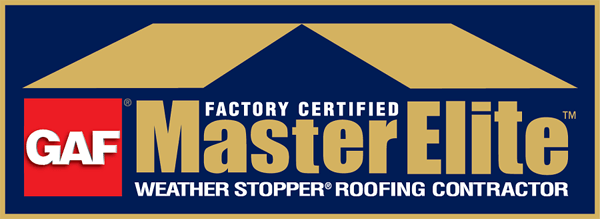Most people have experienced at one time or another in their lives the bad smell of roofing tar being applied. That’s because for a long period of time tar and gravel roofs were the standard commercial flat roof materials of choice. There simply were not many cost effective commercial low slope roofing materials available that could compete with how well they worked. Those days are long gone now. While tar and gravel roofs (also referred to as ‘built-up roofs’) are still used on a large scale, they are no longer the dominant commercial low slope roofing material they once were.
So what is the dominate low slope commercial roofing surface now? That is a difficult question to answer. At this time there is no really dominant low slope commercial roofing surface because there are so many good ones in the commercial roofing marketplace to choose from. There are many factors such as cost, current roofing surface being applied over and material longevity that go into a business choosing which type of low slope commercial roofing application they will use.
The good news is there is a variety of low slope commercial roofing surfaces available that work well and will fit into any businesses specific roofing budget. We will discuss the most common types of low slope commercial roofing applications in this article.
Popular Low Slope Commercial Roofing Materials
Here are the most common low slope commercial roofing applications that businesses choose:
BUILT-UP ROOFING MEMBRANE
As we talked about earlier, these are your once very popular tar and gravel roofing systems. They are still in widespread use because they hold up well, are cost effective for what they do and can handle an extreme amount of foot traffic.
There biggest downside is that it’s difficult at best to locate leaks on when you are having a problem with them.
MODIFIED BITUMEN ROOFING
This is the upgraded version of a built-up roof. Its tar has added fiberglass or polyester fibers to give it superior strength over a regular built-up roof.
It offers the same benefits and drawbacks as a regular built-up roof but will last longer.
THERMOPLASTIC ROOFS
This includes both TPO and PVC roofing materials. They make for an extremely durable, reflective and lightweight roofing surface. This type of roofing application also features strong seams and can go over most existing roofing surfaces.
Its main drawback is that its fasteners or adhesives (the two ways this roofing material can be attached) require periodic maintenance to make sure they stay working properly.
EPDM ROOFING (RUBBER ROOF)
This is an affordable roofing solution that will hold up well for a very long period of time. It consists of large rolls of rubber material that are rolled out over your commercial roof surface and then seamed together using heat or adhesives. It takes very little maintenance to keep this roof in good working order.
The biggest drawback with rubber roofing is that there are many seams that you have to keep an eye on over the years.
METAL ROOFING
Metal roofing is no longer just for homes anymore. It is stronger and built to span even larger roofs these days. They usually have what is known as standing seams which sit above the water runoff line so they rarely leak. They are fire and wind resistant and also can be made to help with energy efficiency, too.
There biggest downside is that their fastening systems sometimes corrode and need to be replaced so there is more maintenance sometimes with this roofing material.
COATED/SPRAYED ON ROOFING SYSTEMS
This could be the wave of the future for commercial low slope roofing applications. This sprayed on material improves a building’s energy efficiency and there are no exposed seams to leak on it. Coated and Sprayed on roofs remain very durable for a large number of years. They also can be applied over most any type existing roof surface.
The biggest drawback is they can be expensive to apply at times.
Which Type of Commercial Low Slope Roofing Application Is Best For Your Business?
As was mentioned there are many different reasons why a company would choose a particular roofing product to use on their low slope roof.
Here are some of the main ones:
- What is your company’s allotted roof repair budget?
- The type of material your business’s existing roof is composed of (you cannot put all types of low slope commercial roofing applications over every existing type of roofing material).
- How long does your company want their new roof to last?
- Does your company focus on being a ‘greener’, environmentally responsible company?
- What other benefits besides being watertight would your company like to get from its new roof?
Sometimes the best way to determine which type of low slope commercial roofing surface will work best for you is to have a roofing professional come look at your business’s existing roof. Companies such as Evergreen Renovations & Roofing, which serves Beaverton, Oregon and the Greater Portland area, are experts at guiding you into the best low slope commercial roofing application to use over your existing roof. They will work with your budget to get you a commercial low slope roof that will stay watertight well into the future.
Find a Proven Commercial Roofing Contractor to Get the Best Results
Once you have decided on the perfect roof for your commercial low slope building, then the next step is finding a suitable contractor to do the job. Your roof is much too important to let just any business apply your new roofing material of choice to it. So take your time to find a roofing contractor that is trustworthy, affordable and experienced at installing the type of commercial roofing material you have chosen. Make sure they offer fair and competitive pricing too.
With the right contractor doing the application and the right material selection, your new commercial low slope roof surface should hold up well for you for a long time into the future.



